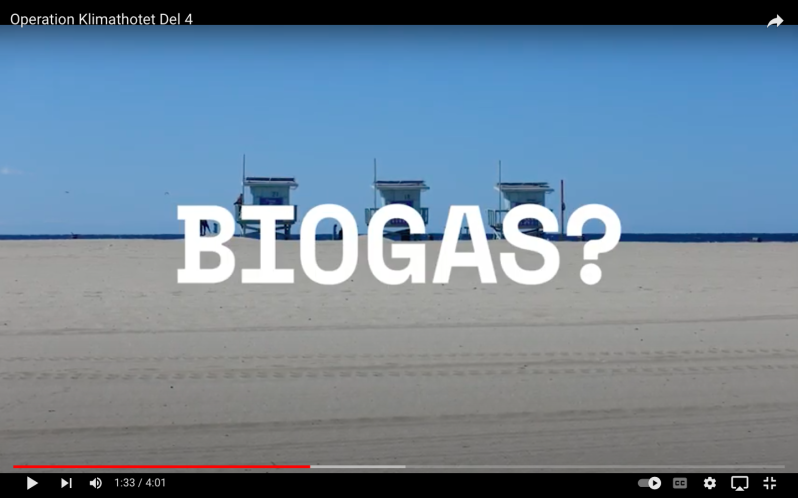What is biogas and biomethane?
The 79 second version on film
FF to 10:40 -12.01
The 79 second version on film
FF to 10:40 -12.01
If you prefer text and graphics
From waste to biogas
From waste to biogas
When plants are digested in a cow´s stomach a gas is produced. Most of the molecules in this bio-gas are methane. The methane content makes the gas flammable and therefore suitable as fuel.
By recreating the bacterial process in cow stomachs a wide range of waste such as kitchen waste, sewage, manure, runoff water from paper mills, slaughter house waste, brewery and distillery waste, etc. can be used to produce biogas containing non-fossil methane. This gives us an amazing tool: with biogas technology we can produce non-fossil fuel for stoves, trucks, buses and ships. From waste. You might want to take a minute or two and let the possibilities of such technology sink in ....
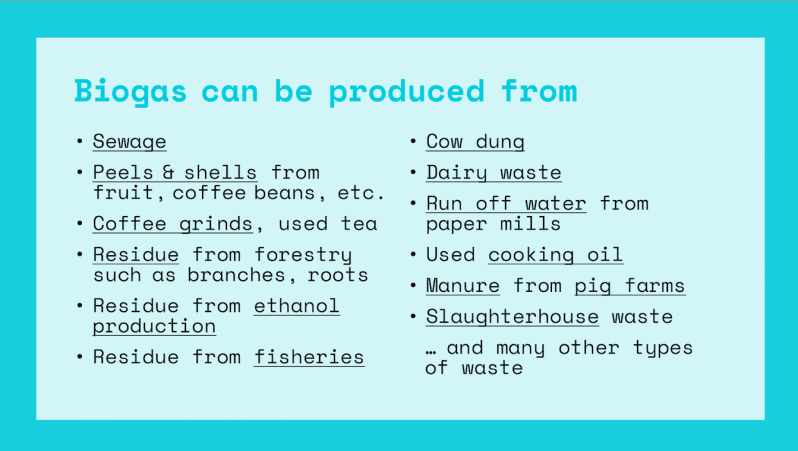
Beside biogas, the process also results in the remaining mix of nutrients working better as a fertilizer than the untreated waste.
Looking at the example Hagelsrum farm, this is the process:
1. Cow manure from five farms is mixed with water and bacteria and fed into a large chamber,
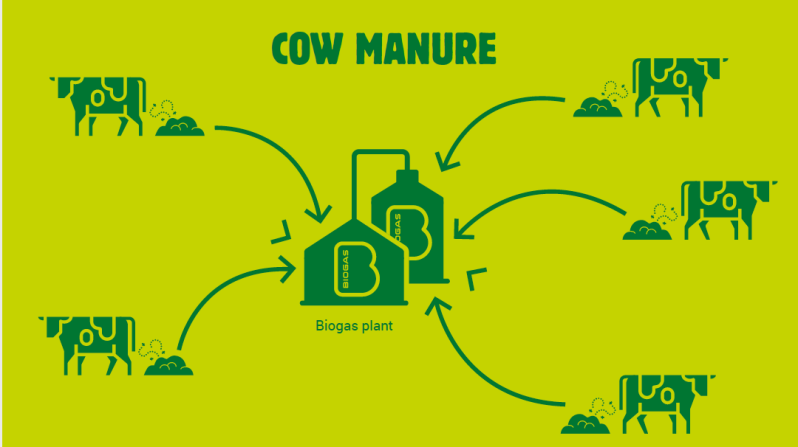
2. The bacterial activity causes production of gas. The gas is collected (often in a building with a dome shaped roof)

3. The gas is concentrated. (separating carbon dioxide until the content is close to 100% methane. The technical term for this is upgrading.) The concentrated gas is compressed and transported to the five fueling stations operated by Hagelsrum Biogas.
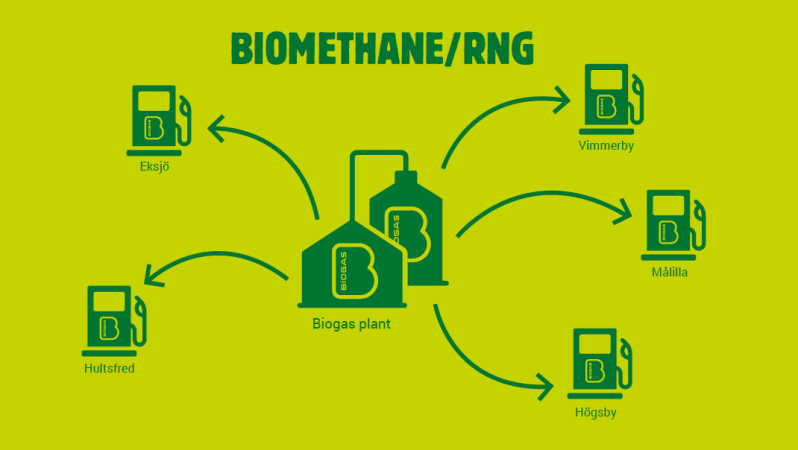
4. The fluid content/"digestate" left in the chamber is pumped out and trucked to the five farms supplying cow manure. Back at the farms it is used as a highly efficient fertilizer.

The process is similar regardless of the substrate in the process being urban organic solid waste (A), sewage (B) or domestic coffee grinds and fruit peels (C. HomeBiogas)
The same formation of biogas happens naturally in composts or landfills. In composts the gas is not collected but at a growing number of landfills, pipe systems are installed making it possible to collect the biogas produced from decomposing organic waste.(D)
A. Biogas plant for urban kitchen waste
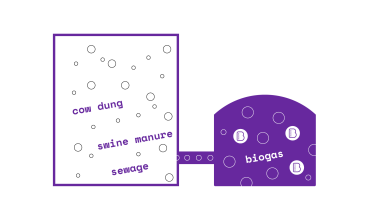
B. Biogas plant for sewage
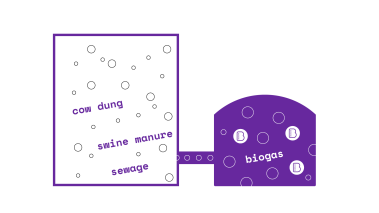
C. Domestic system for single household waste

D. Biogas production in landfills. + collection system
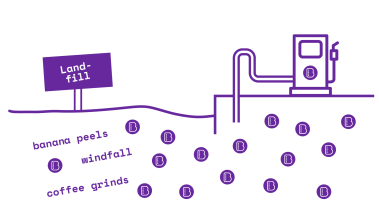
Biogas dictionary
The gas resulting from the bacterial process is widely known as BIOGAS.
Since its flammable it can be used to heat houses, water, for cooking or fueling generators producing electricity.
If the carbon dioxide in the biogas is removed, methane content increases from 65% to 97% which makes the energy content of the product high enough to use it to replace natural gas (= methane of fossil origin), petrol, diesel or liquid petroleum gas (LPG).
In Scandinavia the primary gas mix as well as the concentrated product is called BIOGAS.
In continental Europe however, the latter is called BIOMETHANE.
In the US the same product is called Renewable Natural Gas, RNG.

Another point of confusion sometimes arises when discussing forms for storing and transporting biomethane/RNG.
The two most common forms are
1. compressed (comparable to compressed air in scuba diving tanks)
2. liquified
The compressed form is called bio-CNG or CBG. CNG: Compressed Natural Gas. CBG: Compressed Bio Gas
The liquid form is called bio-LNG. LNG being short for Liquid Natural Gas.
A sometimes confusing and not entirely logical terminology.
There are other ways to produce biomethane/RNG,
one being thermal gasification
one being thermal gasification




